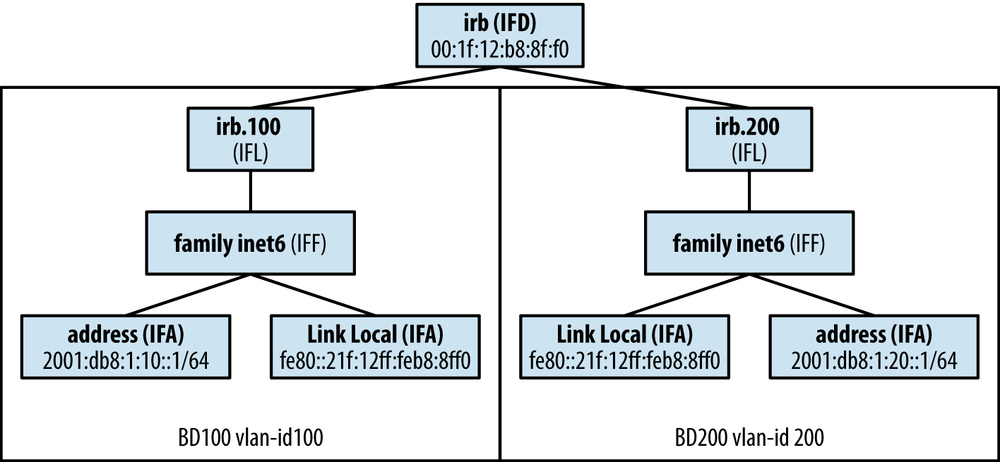Integrated Routing and Bridging
How does one take the quantum leap from Layer 2 into Layer 3? The secret is
that you need a gateway that has access to a Routing Information Base
(RIB) and sits in the same bridge domain as you. The Junos way of making
this happen is through a logical interface called irb. The astute reader knows that irb stands for Integrated Routing and
Bridging.
Although IRB is a bit more than a simple gateway, it has other features such as handling control packets for routing protocols such as OSPF, IS-IS, and BGP. If you’re running a multicast network, it will also handle the copying of frames for the bridge domain.

Figure 2-38. Illustration of IRB and Bridge-Domain Integration.
The hierarchy of Figure 2-38 should look
familiar, as it follows the same interface hierarchy discussed previously
in the chapter. At the top of the hierarchy sits the interface irb—this is a pseudo interface inside of Junos
that acts as the gateway between bridge domains at the RIB. The irb is able to do this because it has both Layer
2 and Layer 3 that are associated to bridge domains and route tables.
Let’s take a look at a basic example:
interfaces { irb { unit 100 { family inet6 { address 2001:db8:1:10::1/64; } } unit 200 { family inet6 { address 2001:db8:1:20::1/64; } } } } bridge-domains { BD100 { vlan-id 100; routing-interface irb.100; } BD200 { vlan-id 200; routing-interface irb.200; ...Get Juniper MX Series now with the O’Reilly learning platform.
O’Reilly members experience books, live events, courses curated by job role, and more from O’Reilly and nearly 200 top publishers.

